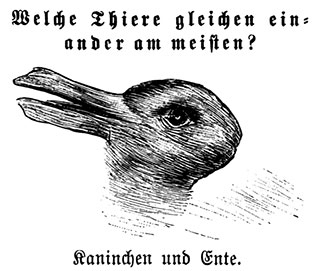
Made famous by Ludwig Wittgenstein in his Philosophical Investigations, this image of a rabbit (or a duck?) features the caption "Welche Thiere gleichen einander am meisten?" which translates to "Which animals are most like each other?" Wittgenstein used this image to describe two different ways of seeing: seeing that / seeing as. Selections from Wittgenstein's Philosophical Investigations are assigned readings for Session 2. (This image is in the public domain.)
Instructor(s)
Prof. Alex Byrne
Prof. Sarah K. Paul
MIT Course Number
24.805
As Taught In
Fall 2015
Level
Graduate
Course Description
Course Features
Course Description
This course is a graduate seminar surveying recent work on self-knowledge. Some questions that will be explored and discussed are: What is the distinctive philosophical interest of self-knowledge? Is self-knowledge really an epistemic achievement? Is it plausible that there is a uniform explanation of all distinctively first-personal self-knowledge?


